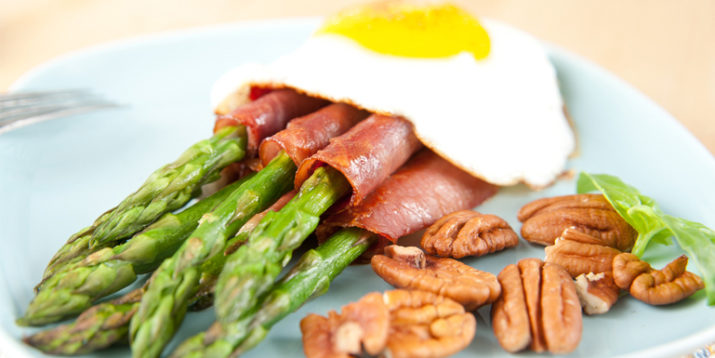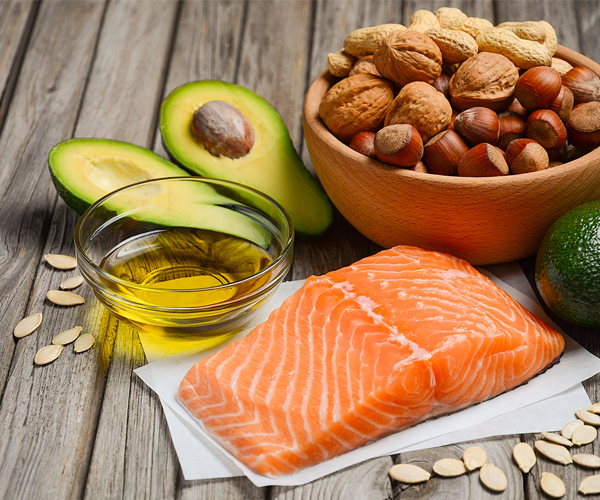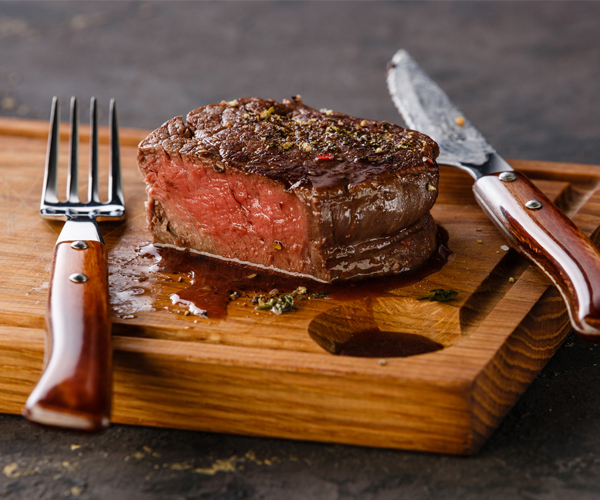Are Low-Carb Diets Effective for Weight Loss?

You’ve probably heard about the benefits of a low-carb diet. Namely, that you’ll experience rapid weight loss by ditching the bread basket and doubling down on a cut of steak.
But a low-carb diet isn’t that straightforward in actual practice. Though the principle behind it sounds simple enough — less pasta! more protein! — the diet can be easy to misinterpret.
Thanks in part to the perpetuation of popular low-carb diets like the Atkins Diet, which recommended replacing carbs with virtually any high-fat, high-protein foods when it came onto the scene in the early ’70s (it’s now a phased approach that includes gradual increases in carbs), many people end up taking low-carb diets to extreme measures. People nixed hash browns and toast, and piled their plates with bacon, eggs, and sausages with impunity. Some people lost weight, and often quickly, following this model.
But, why exactly can people lose weight following a low-carb diet?
What Is a Low-Carb Diet, and How Do You Lose Weight on It?

According to the 2015–2020 Dietary Guidelines for Americans, carbohydrates should make up 45 to 65 percent of a person’s total daily calorie intake. Any amount less than this could be considered low-carb. For someone consuming 2,000 calories a day, this is about 225 to 325 grams of carbohydrates per day. Most low-carb diets limit carbohydrate intake to between 50 to 150 grams per day, depending on the diet, so there’s some variation.
If you want to follow a low-carb diet in a way that optimizes overall health, cut way down on starch-heavy, refined carbs (like potatoes and pasta), and emphasize protein, healthy fats, and most vegetables and some fruits.
“When we eat carbohydrates, they pass through the digestive system to get broken into single molecules of glucose,” says Holly Klamer, M.S., R.D. This glucose is released into the bloodstream from the small intestine, where it then signals the pancreas to release insulin.
Klamer says insulin has two primary roles: to help transport glucose from the bloodstream into the cells for energy or storage, and to promote fat storage. “If there is a high amount of blood sugar in the blood, there will be a high amount of insulin,” says Klamer. And if insulin levels are consistently high because you’re eating a diet high in refined carbs, your body may be storing more fat than you can burn off through exercise and daily activity.
“Low-carbohydrate diets can help with weight loss because they stimulate a much lower insulin release,” Klamer says.
A review of low-carb diets published in The Lancet (a UK medical journal) revealed that duration of the diet and restriction of calories were the ultimate factors that caused weight loss, not restriction of carbohydrates. While the review noted that those following a low-carb diet lost more weight in six months than those on a low-fat, calorie-reduced diet, researchers noted that there was no difference in weight loss among the groups after 12 months.
Review authors did note the following observations about the weight-loss mechanisms of low-carb diets:
- Depletion of glycogen stores leads to excretion of water; much of the rapid weight lost early on in low-carb diets is water weight.
- The ketogenic nature (when fat stores are used for energy) of the diet may suppress appetite, causing less desire to consume excess calories.
But, the jury is still out on whether ketosis is actually responsible for the increased initial weight loss many see on a low-carb diet. One of the trials analyzed in the previously mentioned review was published in the New England Journal of Medicine. Scientists did not find any relation between the presence of urinary ketones and weight loss; after the first six months, urinary ketones weren’t found in most of the low-carb dieters — or among the other group, which followed a low-fat, higher-carb, calorie-restricted diet.
This data, combined with the fact that scientists stopped seeing statistically significant differences in weight loss among the two groups after 12 months, may suggest that weight loss can slow down long term on a low-carb diet.
6 Popular Low-Carb Diets
Five of the most commercially popular low-carb diets include Paleo, ketogenic, Atkins, South Beach, and Dukan.
The Paleo diet focuses on eating the types of foods humans used to consume in the pre-agricultural days. There’s an emphasis on high-protein intake (grass-fed or free-range animal products preferred) and healthy fats; non-starchy, low-glycemic, high-fiber fruits and veggies are allowed in generally smaller quantities.
There aren’t hard and fast macro ratios, but the Paleo diet is based on what hunter-gatherer societies ate, which breaks down to roughly 22–40 percent carbohydrates, 19–35 percent protein, and 28–58 percent fat per day. Healthy oils, eggs, and nuts are encouraged, while grains, legumes, dairy products, excess salt, and processed foods are not.

On a ketogenic diet, carbs are drastically reduced and replaced with fat with the goal of putting your body into a metabolic state called ketosis (again, where the body burns fat for energy). High-fat foods, including butter, coconut oil, and nuts, are allowed, as are high-protein foods, such as meats and full-fat dairy, as well as low-carb veggies.
The Atkins Diet, which holds rank as the original low-carb eating plan, now offers two diet plans that are phased to allow for the gradual increase of carbohydrates over the course of the diets. Atkins allows you to eat high-fiber vegetables, protein, healthy fats, dairy, and low-glycemic fruits; it limits sugar, refined flour, and trans fat.
South Beach is marketed as a high-protein, low-carb, low-sugar diet. For the first two weeks of the plan, you’re supposed to stay away from bread, rice, potatoes, pasta, alcohol, dairy, sugar, and baked goods. During the next phase, you slowly reintroduce whole-grain, low-glycemic carbs, and some starches in small amounts. The third phase of the diet is the lifestyle phase, where you’re encouraged to tweak your diet as necessary in order to maintain it long term.
The Dukan diet, founded by French nutritionist Pierre Dukan, is a protein-heavy, low-carb, low-fat approach to eating. On the diet, you can eat any food (in an unlimited quantity) from a list of 100 pre-approved all-natural foods, 68 of which are pure proteins and 32 of which are veggies.
Though the diet appears to be effective for weight loss, one study revealed that women on the Dukan diet experienced nutritional abnormalities and deficiencies, mostly attributed to low consumption of fruits and vegetables.
BODi’s Portion Fix Eating Plan is a lower-carb diet (about 40 percent of daily calories from healthy carbs) balanced with lean protein and healthy fats (about 30 percent of daily calories each from protein and fats). It acquaints you with appropriate servings of each macronutrient through the use of color-coded containers and teaspoons. Vegetables, fruits, and lean protein (including low-fat dairy) are emphasized; healthy fats and carbs, including whole grains, beans, and some starchy vegetables, are allowed.
The 20-Second Takeaway
A low-carb diet isn’t a magic weight-loss solution, and it may be detrimental to your health if you take its principles to the extreme. Why? Because carbs are one of three key macronutrients necessary for a balanced diet. High-quality carbs supply your body with the nutrients you need to function and feel your best.
The carbs that aren’t so necessary? Refined grains and sugars. Strive to swap these less healthy carbs for vitamin-rich, antioxidant-packed, fiber-filled sources of carbohydrates. Just make sure you’re eating appropriate amounts of healthy carbs. You’ll gradually lose weight and feel way more energized.
